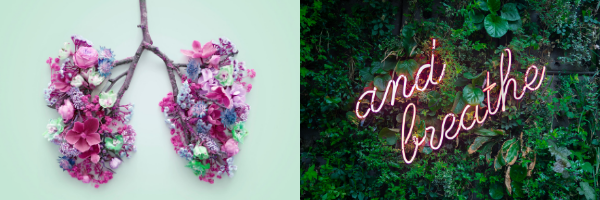We are all expert breathers. By all of us, I mean every living being that depends on oxygen to survive. Last week I observed a Grey Seal lounging on top of a rock in the Sea Pool at the Lincoln Park Zoo in Chicago. As the Grey Seal lay flat on his back, facing the pool’s rim, flippers resting gently on top of his chest, I watched him breathe. The seal appeared to be sleeping as he breathed in and out, slowly and rhythmically. So entranced was I by the rise and fall of his chest that it surprised me when his head popped up and he briefly surveyed the scene before returning to his resting state. Naturally, Grey Seal is not the only master of breath. From the first slap on the back when we’re born to the age of 80, each of us will have inhaled and exhaled approximately 756,864,000 times (Dana, 2018, pg. 134).
If we are all expert breathers from birth, what’s all the recent fuss about breathing as a skill, an art, a practice? Before responding to this question, it may be helpful to understand how the respiration process works and its function in the body. Stay with me as I describe the scientific process of breathing.
When we breathe in, the diaphragm (a dome-shaped muscle lying below the lungs) contracts, making the chest larger, allowing the lungs to expand and suck in air. Oxygen-rich air travels from the nostrils down the nasal passage into the lungs through the trachea (or windpipe). The trachea divides into two bronchi, one entering each lung. From there, the bronchi divide into many bronchioles ending in over 300 million tiny sacs called alveoli, each surrounded by tiny blood vessels called capillaries. Oxygen is transferred from the alveolus into the capillaries where it is absorbed by red blood cells. Blood travels throughout the body, delivering oxygen to the body’s cells, producing cellular energy which fuels our body.
The blood moving through the capillaries into the alveolus also contains carbon dioxide molecules. Carbon dioxide molecules are released into the alveolus chambers where they travel back up through the bronchioles, bronchus and windpipe and as the diaphragm expands, out through the nostrils (Carroll, S., Smith, T., 1994, Fliplearn . com , 2018). This process of respiration occurs on average 12-18 times per minute (Mason et al., 2013). It is a process that is so basic to our survival that most of the time we aren’t even aware of it.
When I was fresh out of graduate school, I started hearing about Herbert Benson, a cardiologist at Harvard who used deep breathing exercises to reduce stress levels in cardiology patients. Benson and other physicians observed that some patients experienced an increase in blood pressure in a doctor’s office but did not experience high blood pressure in other settings.
Benson studied this phenomenon and determined that while our bodies release hormones to prepare us for flight or fight (the stress response) the opposite is also true as our bodies return to a natural state of relaxation. He termed this: “the Relaxation Response- an inducible, physiologic state of quietude” (Benson, 1975, revised 2000, pg. xvii). Treatment was simple, requiring a quiet environment, a sound, word or phrase to repeat silently, a passive attitude and a comfortable position (pg. xviii). Benson prescribed the Relaxation Response for everything from high blood pressure to insomnia.
For years I received mailings from the Harvard Continuing Education program promoting seminars led by Dr. Benson. While being trained in the Relaxation Response intrigued me, I resisted learning more about it out of fear that like oil and water, it would not mix well with my education as a psychologist, which focused more on regulating the mind than the body. I also feared that patients would perceive breathing exercises to be too “woo-woo” (Blissett, B., pg. 28) and unscientific.
Interestingly, as evidence-based research became the benchmark of whether psychotherapeutic treatment was credible, data from breathing treatments appeared to produce more measurable outcomes for stress reduction than the psychodynamic approach I was trained in.
This year, however, especially after witnessing constant, unrelenting stress in patients related to Coronavirus and political and racial tension in the U.S., I decided to introduce deep breathing exercises as a regular and complementary approach to traditional psychotherapy. I’ve been amazed at how patients welcome this approach to treatment and experience it as an immediate way to feel less stressed. When they feel calmer, they recognize their ability to think more rationally. Far from being “woo woo,” almost all the patients I’ve introduced relaxation breathing to already have some familiarity with the practice through an exercise class, an app on their phone, or social media.
Polyvagal Theory, particularly the work of international expert Deb Dana, expands on the concept of using breathing for psychotherapeutic treatment. (Dana is a consultant to the Traumatic Stress Research Consortium in the Kinsey Institute at Indiana University.) Using Polyvagal Theory techniques, I’ve helped patients who have experienced trauma and Post Traumatic Stress Disorder (PTSD) regulate their breathing so that they are not in a constant state of anxiety.
Polyvagal Theory recognizes that the autonomic nervous system has two main branches: the sympathetic nervous system that prepares us for action and responds to a stressful situation with fight or flight (think about a gun being pointed at you), and the parasympathetic nervous system, which returns the body to a calm state (the gun pointing is just the shadow of a tree). The Dorsal Vagal pathway is part of the parasympathetic branch which, when all else fails “takes us into shutdown, collapse and disassociation.” (Dana, pgs. 11-12). Using the metaphor of a ladder, Dana describes how slow, deep breathing helps us relax enough to recognize the difference between the gun and the shadow and respond physiologically appropriately.
While humans are biologically driven to be breathing experts for the purpose of cellular respiration, physical action and survival, it takes practice, practice, practice to intentionally regulate our breathing. I started out my career teaching undergraduates how to use relaxation breathing for performance anxiety, having no idea of its broader implications. Even today after integrating breathing into a daily practice, I have much to learn. In my mind I’m taking notes from watching the “hooked nose pig of the sea” at the Lincoln Park Zoo whom after raising his head to whatever caught his attention, perceived no real threat, and rested it once again on his smooth rock pillow where he appeared to resume a pleasant state of relaxation.
References
Benson, H., (revised 2000) the Relaxation Response
Blissett, B. (2020) Take a deeper breath. https://www.ft.com/content/e723cb21-b08f-407f-bcdd-00bc74d5da03
Carroll., S & Smith, T., (1995) The Complete Family Guide to Healthy Living
Dana,D. (2018) The Polyvagal Theory in Therapy
Fliplearn . com (2018) Understanding the fundamental life process of breathing – How human respiratory system works https://www.youtube.com/watch?v=PlNEabFZ5Qk
Mason, H., Vandoni, M., deBarbieri, G., Codrons, E., Ugargol, V., & Bernardi, L., (2013) Cardiovascular and respiratory effect of yogic slow breathing in the yoga beginner: What is the best approach? Evidence-Based Complementary and Alternative Medicine, 2013, 743504.




![[VIDEO] How to Make Them See It Your Way – Communicating with Your Ex About Parenting Decisions](https://carolinesteelberg.com/wp-content/uploads/2020/05/Caroline-Steelberg-Youtube-Thumbnail-300x225.png)
